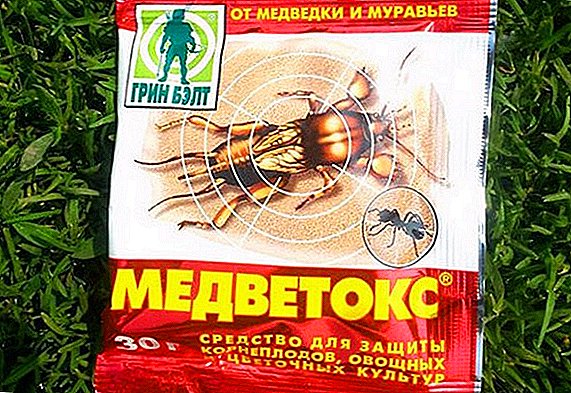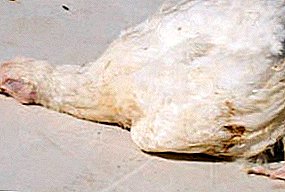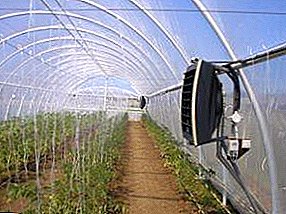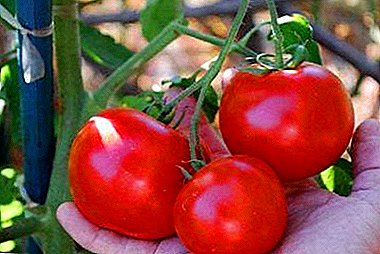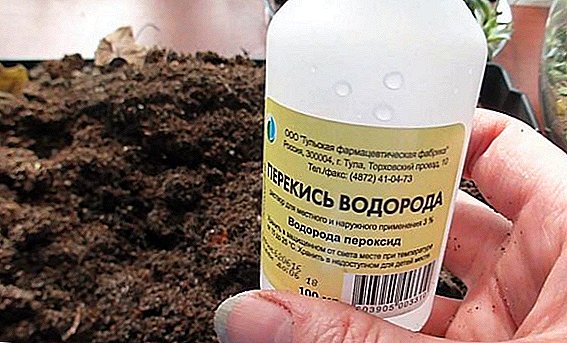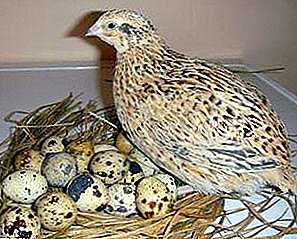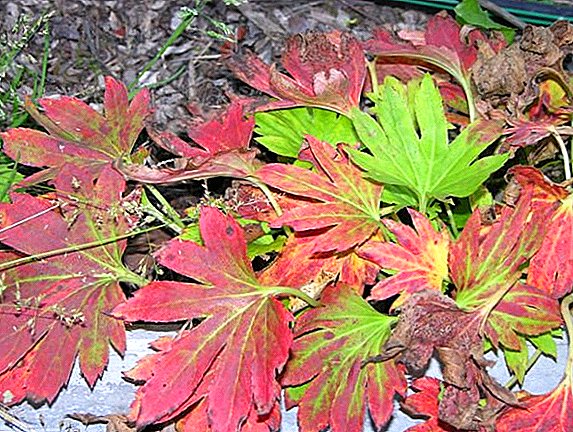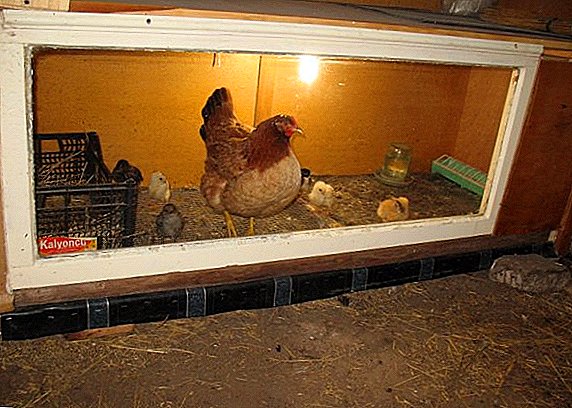 When breeding chickens in an incubator after their birth, the question of where to keep the babies is acute. Many poultry farmers use for this purpose a specialized brooder, or their own hand-made and equipped cardboard boxes. To build a box for birds is quite simple, but you need to approach this process responsibly, because the building will be home for chickens for a couple of weeks of life. How to make a "nursery" for birds, what tools and materials will be needed, as well as how to choose a litter for the box - we'll talk further in the article.
When breeding chickens in an incubator after their birth, the question of where to keep the babies is acute. Many poultry farmers use for this purpose a specialized brooder, or their own hand-made and equipped cardboard boxes. To build a box for birds is quite simple, but you need to approach this process responsibly, because the building will be home for chickens for a couple of weeks of life. How to make a "nursery" for birds, what tools and materials will be needed, as well as how to choose a litter for the box - we'll talk further in the article.
Where to keep day-old chicks
In nature, the hen deals with heating and caring for chickens from the first days of life. However, in incubator breeding of birds or when buying daily babies, there is no such possibility, therefore you have to either buy ready-made brooder, or make the structure yourself.
Did you know? Already on the second day from the beginning of the development of a chick in the embryo, the heart is formed and beats.
The finished version has its advantages: an optimally selected microclimate, the ability to simply change the parameters of humidity, lighting, etc., and ease of use. The device is already equipped with lighting and heating devices, ventilation and bedding, sometimes feeders and shelves can be included in the configuration. But it will have to pay a fairly large amount, which may not be entirely rational when breeding chickens in small quantities at its farmstead.

In this case, it would be more expedient to build a brooder yourself from simple improvised means. A little knowledge, materials and tools - and you get excellent "nursery" for newborn chickens.
How to make a box for chickens
With minimal skills and knowledge, you can build a “home” for chicks from virtually any available materials. Instead of homemade brooder, the owners sometimes resort to using ordinary cardboard boxes or wooden boxes, but in such conditions it is difficult for the chicks to provide an optimal microclimate. Therefore, making a simple home brooder becomes a necessity.
Find out why the wings of chickens are lowered, why chicks peck at each other, than to feed the chickens for good growth.
Necessary materials
For the manufacture of a brooder for the content of 50 individuals will need the following materials:
- 2 sheets of plywood 150 × 150 cm;
- metal mesh with a cell size of 10 × 10 mm (cut 150 × 50 cm);
- plaster grid (2 pieces 50 × 75 cm);
- self-tapping screws;
- metal corners;
- 4 door hinges;
- wooden slats (width 50 mm, thickness 15 mm).
 Brooder drawing example
Brooder drawing example
Important! It is undesirable to use OSB for the construction of a brooder (due to the rough edges difficulties in cleaning and disinfection will arise), as well as polymeric materials (due to the inability of the material to "breathe").
To create a microclimate in a container, you will need:
- 60 watt light bulb;
- cable;
- cartridge.
Tool list
For the manufacture of a brooder such a minimum of tools is needed:
- a simple pencil or marker for basting;
- roulette;
- hacksaw or jigsaw;
- hammer;
- all-purpose adhesive;
- level;
- drill;
- screwdriver (can be replaced with a screwdriver);
- pliers;
- cutting pliers.
 Brooder model
Brooder model
Step-by-step instruction
Then you can start making brooder:
- The first sheet of plywood should be cut into 3 equal parts (150 × 50 cm), 2 squares 50 × 50 cm should be cut from the second sheet. 3 elongated parts will be used to make the upper, lower and rear walls, and 2 square parts will serve as side walls.
- With the help of the corners and screws it is necessary to fasten all the walls except the bottom.
- Next you need to build a pallet. To do this, you need to make a frame of this size so that it easily passes across the width of the brooder. Then the bottom wall should be adjusted to the size of the resulting frame and attach with screws.
- To make the bottom of the brooder, in which the chicks will move, you will need to knock out the frame again (it should be clearly placed inside the structure) and attach a net to it. Next, on the side walls of the brooder attach the slats, and they are located bottom.
- 10 cm below the bottom you need to fasten the guide rails to accommodate the pallet.
- It now remains to make the door. To do this, in the center of the structure vertically drive the bar. Next, make 2 frames from the slats (door bases). With the help of a loop, they need to be attached to the sidewalls, and on the frames themselves - to tighten a dense plaster grid.
- In the upper wall in the center it is necessary to drill a hole, stretch the cable, install the cartridge and screw in the light bulb.
- On the back of the structure you need to hang a thermometer.
Video: nuances when building a brooder
Upon completion, the design can be repainted, although this is not necessary. Further it will be necessary only to put troughs and drinking troughs and move them to the nursery. For the first couple of days, for additional thermal insulation, a soft cloth can be laid on the mesh bottom. It will need to be changed several times a day as it becomes wet and dirty.
The brooder will be equipped with knowledge of how to use an infrared lamp to heat chickens, how to properly make a drinker for chickens with your own hands, how to make a feeder for broiler chickens with your own hands.
As you can see, litter construction is not used due to the convenient pallet. But if, for whatever reason, the chickens were already in your hands, and there is still no special chickens, you can resort to the old old-fashioned method - keeping the chicks in a box. In this case, you will definitely need to use the litter, which we will discuss below.
Bedding for chickens: purpose and basic requirements
Just a couple of decades ago, there was no such thing as a brooder, and our grandmothers grew chickens in the most ordinary cardboard boxes, on the bottom of which they laid a newspaper or a piece of cloth. With this method, the litter was quickly wetted, polluted, and the chickens also got dirty. However, the choice of bedding should be approached more responsibly, because its quality will determine the health and health of chicks.

Primary requirements:
- Hygroscopicity. The material must absorb moisture well, because chicken droppings contain a lot of liquid. It is very important that the legs of the chicks are dry.
- Thermal insulation. Feeding should reliably protect the paws of chicks from freezing. A temperature of 30-35 ° C is required for both the air in the chicken house and the floor.
- Security. If bulk material is used as a litter, then its particles should be larger than the chicken can swallow. In addition, they must be non-toxic.
- Ability to absorb litter. If the chicks are constantly in their own litter (that is, in unsanitary conditions), then soon this can lead to serious infectious diseases.
Did you know? There is an interesting experiment in which you can immobilize the chicken. To do this, put the feathered on the floor and draw a flat vertical line in front of it. After contemplation by the chicken of this process, it is no longer kept, but it remains fixed for several minutes to half an hour. This phenomenon is called chicken hypnosis, but from a scientific point of view, the bird simply has the ultimate fear and stupor.
Litter material, among other things, should be light and affordable. Ideally, after using the litter can be rationally disposed of - as fertilizer, mulch or compost.

Features of growing chickens on the litter
Next, consider the main types of litter, their advantages and disadvantages, criteria for material quality and frequency of replacement.
Learn how broiler chickens are raised at a poultry farm, how to raise broiler chickens at home, what is the scheme of broiler chickens feeding with antibiotics and vitamins, how to treat diarrhea in broiler chickens.
Choosing the best material
You can use various industrial wastes available in your area as bedding material. For example, in some countries rice or peanut husks, waste from the processing of cane sugar are used for this. In our area for growing broiler and egg breeds most often in the course are the following materials:
- Sawdust or wood chips. The most optimal and suitable option for many. They have excellent hygroscopicity, heat insulation, do not clog up and easily loosen, besides absorb an unpleasant smell. From sawdust it is easy to remove the top contaminated layer. In addition, it is believed that woody smell frightens off harmful insects. The disadvantage is that chickens will actively peck up sawdust, which can be dangerous for their health.
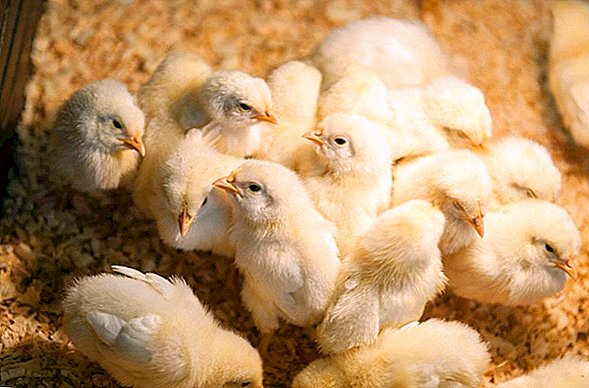
- Straw. If this option is available, it is best to choose wheat, but it will have to be crushed. Disadvantages is that the straw quickly clumps, gets wet, is covered with mold.
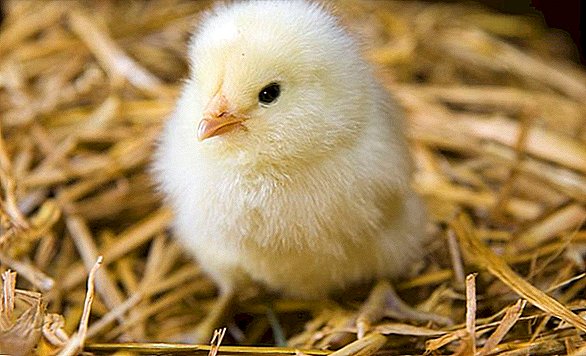
- Newspaper. Not the best option due to rapid wetting, pollution and the need for very frequent replacement.
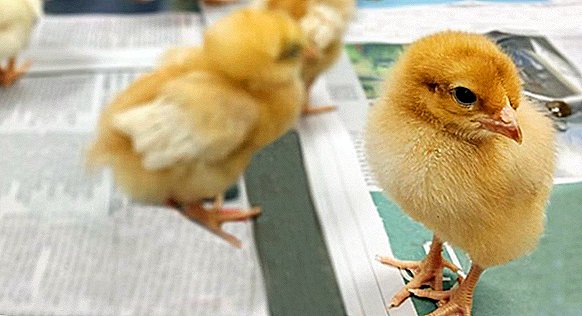
- Peat. Good litter material. Of the benefits: good hygroscopicity, neutralization of unpleasant odors.
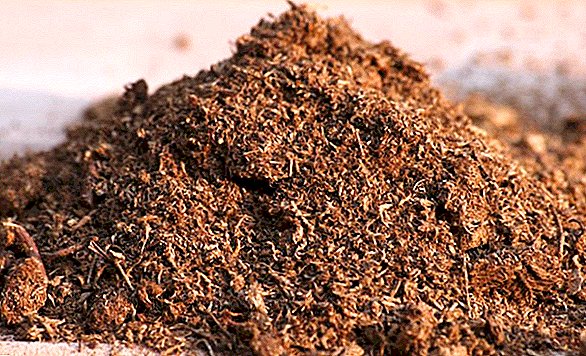
Important! If you use sawdust, choose waste only from coniferous trees. Hardwood sawdust has sharp edges that, if accidentally swallowed by a chicken, can damage the digestive tract.
How to check the quality of the litter
High-quality litter should only slightly adhere to the palms when squeezed, but when unclenching the hand, it is easy to crumble. If the material does not stick at all to the hands and the litter cannot be molded into a ball, this indicates its excessive dryness.
If, on the contrary, upon squeezing, an elastic lump is formed from the material, which does not disintegrate when the hand is released, it means that the litter is too wet. With excessive moisture in chickens repeatedly increases the risk of infectious and colds, poisoning with ammonia gases.
How often to change the content
The frequency of changing litter depends on the degree and speed of its pollution. For example, when the chicks are crowded, when chicks and ducklings are kept together, or if the drinking bowls are not properly positioned, the litter will not only be wetted, but rather wet, creating an increased humidity and dampness. In this case, it must be changed several times a day.

If the density of planting of chicks is calculated correctly, then the litter material should be changed every 1-2 days, paying particular attention to the rest areas (this is how most litter usually accumulates) and the zones near the troughs and feeders. The thickness of the litter layer depends on the floor temperature: 2-3 cm is enough on the heated surface, and if the floor is not heated, a layer of 10 cm is needed.
Find out what to do if chickens die, if chickens leave their legs, if chickens sneeze, wheeze, cough, if chicks do not grow.
Thus, day-old chicks can be kept both in the purchased brooder and in the self-created structure, which even an inexperienced person will be able to make. If such a device is not available, you can resort to using a conventional cardboard box or a wooden box, which you definitely need to insulate with bedding.
Reviews of litter for chickens and chickens








